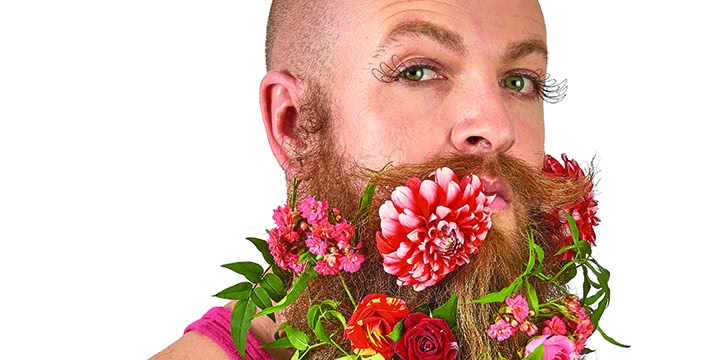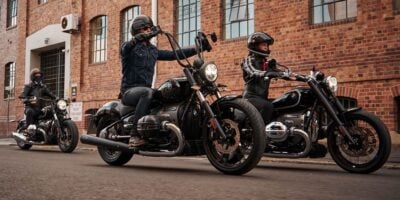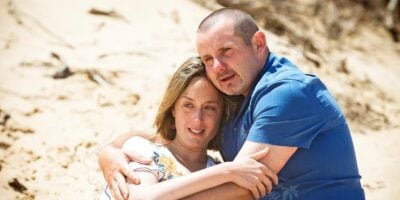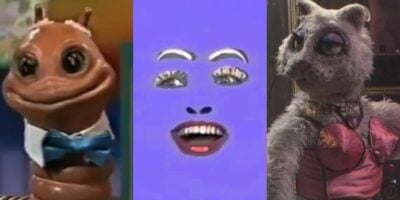For all Sydney’s big shiny venues and fashionable watering holes, it’s a city full of overlooked nooks and undiscovered crannies. That’s where Sydney Fringe Festival comes in. Throughout the month of September, the Fringe puts the focus on Sydney’s independent arts sector. With the Fringe now in its sixth year, festival director Kerri Glasscock explains how it’s found a new sense of confidence.
“Last year was more about welcoming the community into the world of independent artists – to get people to go to smaller spaces,” she says. “This year we’re hitting the streets. We’re going to be a lot more visual than we have been in past years.”
The beating heart of this year’s festival will be the Festival Village, taking up residence for the first time in Erskineville. “We have partnered with the local businesses and will be creating a hub for the entire festival,” says Glasscock. “We are building a custom-built 60-seat theatre, a little speakeasy lounge and a 1920s-themed bar, and we’re doing some amazing site-specific work in the church hall.”
With first-time Fringe-goers in mind, the festival program has been broken up into weekly themes. From a week spotlighting the inner city through to one packed with family-friendly events, the program is designed to facilitate maximum engagement between artists and audiences.
“We had a focus on geographical precincts last year as a way of navigating through the city,” says Glasscock. “And from those precincts, we found themes arose quite naturally. We try to highlight the natural identity of spaces; we try to put things where they naturally fit. We’ve gone with our intuition, so hopefully that offers audiences a clearer and more concise experience.”
The Sydney Fringe remains an infant compared to other more worldly and well-established Fringe festivals in other cities. This has its advantages and disadvantages, as Glasscock explains.
“The benefit is we can tailor the festival to work for our city,” she says. “Unlike Adelaide and their Fringe Festival, Sydney is quite spread out. So we work hard to create dense pockets of activity like the Festival Village in Erskineville and our other mini-hubs. On the flipside, there is a preconception about what a Fringe Festival is, and we sit slightly outside that. We’re not attached to a main stage festival, obviously. For us, it’s more about highlighting the independent artists of the city. It’s an opportunity for them to come together and make a lot of noise.”
Of course, staging an ambitious event doesn’t come without hurdles. Sydney is quickly becoming a city of struggling performance venues and stifling bureaucratic regulations. “The lack of suitable and dedicated venues is the most crucial problem affecting our sector, in my opinion,” says Glasscock. “It’s highlighted in a program like this because there is an intense amount of artists that want to put on shows. The reality is we live in one of the most expensive cities in the world now. Suburbs that were culturally friendly are becoming gentrified. It’s making it difficult for venues to survive.”
However, there is hope on the horizon. Glasscock sees the Sydney Fringe as an exercise in cultural and logistical innovation. “We’re tackling the problem head-on this year and have partnered with the City Of Sydney to test a pop-up temporary theatre licence project. We’re looking forward to breaking down barriers, testing practical solutions and opening up affordable spaces for artists.”
[Peter Baecker photo by Florian Groehn]
As one of the star Fringe attractions, performance artist and so-called festival mascot Peter Baecker echoes Glasscock’s concern for Sydney’s struggling cultural scene. “I think the city just needs to take it easy,” he says. “Many things criminalised in Sydney are not crimes. It is a very controlled environment. Of course, violence on the streets is terrible but I’m not so sure more control brings more security.”
Dividing his time between Sydney and Berlin, the Viennese artist is passionate about improvised spaces and making the most of every moment. He began working as a DJ and, unable to resist the lure of throwing hot shapes to ’80s pop classics, became a go-go dancer. “I started as a bearded tranny because I saw Priscilla, Queen Of The Desert and was completely addicted,” he says. “Me and a friend started DJing in drag and creating a good time for people, which apparently I’m still doing.”
Baecker is celebrating 20 years of performance this year. Constantly developing new artistic approaches, he has pushed the limits of public engagement. “I see myself in the tradition of the Fluxus movement of the ’60s, where the real art happens within the audience,” he says. “The artist simply creates the setting that makes things possible.”
The project he has developed for the Fringe will be an open-ended performance roaming across three venues close to the Sydney CBD. “When you work in public spaces with random people – Broadway Shopping Centre, for example – anything can happen,” he says. “The idea is to ship Peter Baecker to Sydney where he creates a living space out of a shipping crate.”
Spontaneity is an essential part of Baecker’s artistic formula. “I don’t want to make art in safe places,” he says. “In galleries, you have this big sign that says, ‘This is art – treat it with respect.’ But if you encounter my art in a public space, you might think I’m a crazy homeless guy. Every possible association can happen because you don’t have those preconceptions. I want my art to be as free-floating as I can make it.”
Baecker’s performance persona is channelled through a flamboyant silver body suit and mohawk hairstyle. “The suit plays with people’s prejudices; it’s not a particularly spectacular costume but it’s high-impact,” he says.
As a specialist in generating good vibes, Baecker pairs this ensemble with his love for ’80s music. “When I heard ‘I Feel Love’ by Donna Summer for the first time, I was shaken to the core,” he says. “Pop beats are my heartbeat.”
In addition to Baecker, the Fringe program is packed with diverse acts, advocating art of all shapes and sizes. For instance, Loose: A Private History Of Booze And Iggy Pop 1996 – 2015 will be staged at Eliza Street in Newtown. The pseudo-biography features New Zealand’s award-winning comedian Jonny Potts. Over at Giant Dwarf, Winter Is Coming is a spoof show that ought to lure in fans of the wildly popular HBO series, Game Of Thrones. And on a subtler note, 6 Degrees Of Ned Kelly is an elusive play built around bushranger ancestry, to be staged at Erskineville Town Hall.
In terms of musical highlights, Cold Chisel’s Don Walker and his band will be performing a set of blues covers and original tunes. Singer-songwriter Wes Carr will be presenting Here Comes The Sun, a moving interpretation of George Harrison’s songbook. And dialling up the tempo a notch, Redfern Groove is an open-invite celebration of indigenous music, culture and community.
Even beyond music, theatre and comedy, this year’s Sydney Fringe Festival is bursting with colourful events. Aimed at raising the underground scene to the surface, it is also an opportunity to counteract the negative impact of funding cuts and lockout laws. Glasscock sums up the ethos: “It’s great to write statements to the Senate, but the best way to support the independent sector is to support their work.”
More: For the full Sydney Fringe program, visit sydneyfringe.com



































